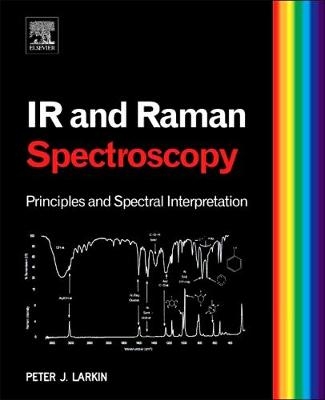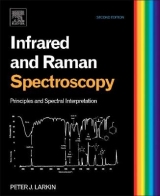
Infrared and Raman Spectroscopy
Elsevier (Verlag)
978-1-4933-0127-0 (ISBN)
- Titel erscheint in neuer Auflage
- Artikel merken
The book reviews basic principles, instrumentation, sampling methods, quantitative analysis, origin of group frequencies and qualitative interpretation using generalized Infrared (IR) and Raman spectra. An extensive use of graphics is used to describe the basic principles of vibrational spectroscopy and the origins of group frequencies, with over 100 fully interpreted FT-IR and FT-Raman spectra included and indexed to the relevant qualitative interpretation chapter. A final chapter with forty four unknown spectra and with a corresponding answer key is included to test the readers understanding. Tables of frequencies (peaks) for both infrared and Raman spectra are provided at key points in the book and will act as a useful reference resource for those involve interpreting spectra.
This book provides a solid introduction to vibrational spectroscopy with an emphasis placed upon developing critical interpretation skills. Ideal for those using and analyzing IR and Raman spectra in their laboratories as well as those using the techniques in the field.
Peter J. Larkin leads Solvay's Spectroscopy and Materials Characterization group based in Stamford, Connecticut. He has more than 25 years of experience using IR, Raman, and NIR spectroscopy in the chemical and pharmaceutical industry. This includes managing research groups in R&D environments as well as directing analytical method development, validation, and transfer teams. He specializes in IR and Raman spectral interpretation, spectroscopic chemometric analyses, early phase API and chemical development support, and process analytical techniques (PAT). Dr. Larkin received his PhD from the University of Pittsburgh in 1990 using resonance Raman and vibrational circular dichroism spectroscopy to study heme proteins. Since that time he has worked in analytical departments both in the specialty chemical and pharmaceutical industries. While at American Cyanamid/Cytec Industries in Stamford, CT, Larkin received comprehensive training in IR interpretation from Dr. Norman B. Colthup. He subsequently worked at Wyeth Pharmaceutical, had a brief stint with Pfizer, lead the solid state analysis group at Bristol-Myers Squibb, and now leads the spectroscopy and materials characterization group at Solvay.
1. Introduction - Infrared and Raman Spectroscopy 2. Basic Principles Electromagnetic Radiation 3. Instrumentation and Sampling Methods Dispersive Systems 4. Environmental Dependence of Vibrational Spectra 5. Origin of Group Frequencies 6. Generalized Infrared and Raman Spectra 7. General Outline for IR and Raman Spectral Interpretation. 8. 108 illustrated and interpreted IR and Raman Spectra 9. 44 Unknown IR and Raman Spectra with answer key
| Sprache | englisch |
|---|---|
| Themenwelt | Naturwissenschaften ► Chemie ► Analytische Chemie |
| Naturwissenschaften ► Chemie ► Physikalische Chemie | |
| ISBN-10 | 1-4933-0127-6 / 1493301276 |
| ISBN-13 | 978-1-4933-0127-0 / 9781493301270 |
| Zustand | Neuware |
| Haben Sie eine Frage zum Produkt? |
aus dem Bereich



